3-Thiopheneboronic acid
Synonym(s):(Thiophene-3-yl)boronic acid;3-Thiopheneboric acid;3-Thiopheneboronic acid;3-Thiophenylboronic acid;Thiophene-3-boronic acid
- CAS NO.:6165-69-1
- Empirical Formula: C4H5BO2S
- Molecular Weight: 127.96
- MDL number: MFCD00151851
- EINECS: 212-821-3
- SAFETY DATA SHEET (SDS)
- Update Date: 2023-05-04 17:29:24

What is 3-Thiopheneboronic acid?
Chemical properties
white to light yellow crystal powder
The Uses of 3-Thiopheneboronic acid
3-Thiopheneboronic Acid is used in the synthesis of porphyrins as inhibitiors of telomerase. It is also used to prepare 1,4-disubstituted imidazoles as potential antibacterial agents.
The Uses of 3-Thiopheneboronic acid
suzuki reaction
What are the applications of Application
3-Thienylboronic acid is Contains varying amounts of anhydride
Properties of 3-Thiopheneboronic acid
| Melting point: | 164-169 °C (lit.) |
| Boiling point: | 287.9±32.0 °C(Predicted) |
| Density | 1.32±0.1 g/cm3(Predicted) |
| storage temp. | Keep in dark place,Sealed in dry,Room Temperature |
| solubility | soluble in Methanol |
| form | Powder |
| pka | 8.25±0.10(Predicted) |
| color | Almost white to grayish |
| BRN | 113573 |
| CAS DataBase Reference | 6165-69-1(CAS DataBase Reference) |
Safety information for 3-Thiopheneboronic acid
| Signal word | Warning |
| Pictogram(s) |
 Exclamation Mark Irritant GHS07 |
| GHS Hazard Statements |
H302:Acute toxicity,oral H315:Skin corrosion/irritation H319:Serious eye damage/eye irritation H335:Specific target organ toxicity, single exposure;Respiratory tract irritation |
| Precautionary Statement Codes |
P261:Avoid breathing dust/fume/gas/mist/vapours/spray. P264:Wash hands thoroughly after handling. P264:Wash skin thouroughly after handling. P270:Do not eat, drink or smoke when using this product. P301+P312:IF SWALLOWED: call a POISON CENTER or doctor/physician IF you feel unwell. P302+P352:IF ON SKIN: wash with plenty of soap and water. P305+P351+P338:IF IN EYES: Rinse cautiously with water for several minutes. Remove contact lenses, if present and easy to do. Continuerinsing. |
Computed Descriptors for 3-Thiopheneboronic acid
| InChIKey | QNMBSXGYAQZCTN-UHFFFAOYSA-N |
3-Thiopheneboronic acid manufacturer
Rivashaa Agrotech Biopharma Pvt. Ltd.
1Y
Phone:+91-7926462688
product: 6165-69-1 3-Thiopheneboronic Acid 98%
Denisco Chemicals Pvt Ltd
1Y
Phone:+91-9989050751
Whatsapp: +91-9989050751
product: 6165-69-1 3-Thiopheneboronic Acid 99%
New Products
(S)-3-Aminobutanenitrile hydrochloride 4-Methylphenylacetic acid N-Boc-D-alaninol N-BOC-D/L-ALANINOL Tert-butyl bis(2-chloroethyl)carbamate 3-Morpholino-1-(4-nitrophenyl)-5,6-dihydropyridin- 2(1H)-one Furan-2,5-Dicarboxylic Acid Tropic acid 1-Bromo-3,5-Di-Tert-Butylbenzene S-2-CHLORO PROPIONIC ACID ETHYL ISOCYANOACETATE 2-Bromo-1,3-Bis(Dimethylamino)Trimethinium Hexafluorophosphate 4-IODO BENZOIC ACID 3-NITRO-2-METHYL ANILINE 1-(2,4-DICHLOROPHENYL) ETHANAMINE (2-Hydroxyphenyl)acetonitrile 4-Bromopyrazole 2-(Cyanocyclohexyl)acetic acid 4-methoxy-3,5-dinitropyridine 1-(4-(aminomethyl)benzyl)urea hydrochloride 2-aminopropyl benzoate hydrochloride diethyl 2-(2-((tertbutoxycarbonyl)amino) ethyl)malonate tert-butyl 4- (ureidomethyl)benzylcarbamate Ethyl-2-chloro((4-methoxyphenyl)hydrazono)acetateRelated products of tetrahydrofuran

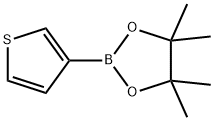
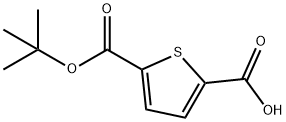
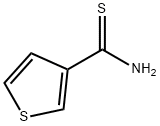
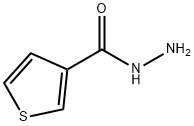
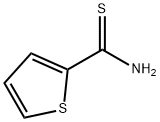
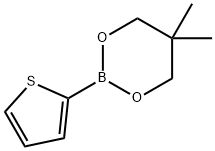
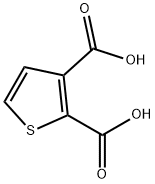
You may like
-
 6165-69-1 3-Thiopheneboronic Acid 98%View Details
6165-69-1 3-Thiopheneboronic Acid 98%View Details
6165-69-1 -
 6165-69-1 98%View Details
6165-69-1 98%View Details
6165-69-1 -
 6165-69-1 3-Thiopheneboronic Acid 99%View Details
6165-69-1 3-Thiopheneboronic Acid 99%View Details
6165-69-1 -
 3-Thiopheneboronic Acid (contains varying amounts of Anhydride) CAS 6165-69-1View Details
3-Thiopheneboronic Acid (contains varying amounts of Anhydride) CAS 6165-69-1View Details
6165-69-1 -
 3-Thiopheneboronic acid, ≥97% CAS 6165-69-1View Details
3-Thiopheneboronic acid, ≥97% CAS 6165-69-1View Details
6165-69-1 -
 Thiophene-3-boronic acid 96% CAS 6165-69-1View Details
Thiophene-3-boronic acid 96% CAS 6165-69-1View Details
6165-69-1 -
 3-Thienylboronic acid CAS 6165-69-1View Details
3-Thienylboronic acid CAS 6165-69-1View Details
6165-69-1 -
 118753-70-1 98+View Details
118753-70-1 98+View Details
118753-70-1
Statement: All products displayed on this website are only used for non medical purposes such as industrial applications or scientific research, and cannot be used for clinical diagnosis or treatment of humans or animals. They are not medicinal or edible.